Giving priority to biodiversity – how much yield did it cost?
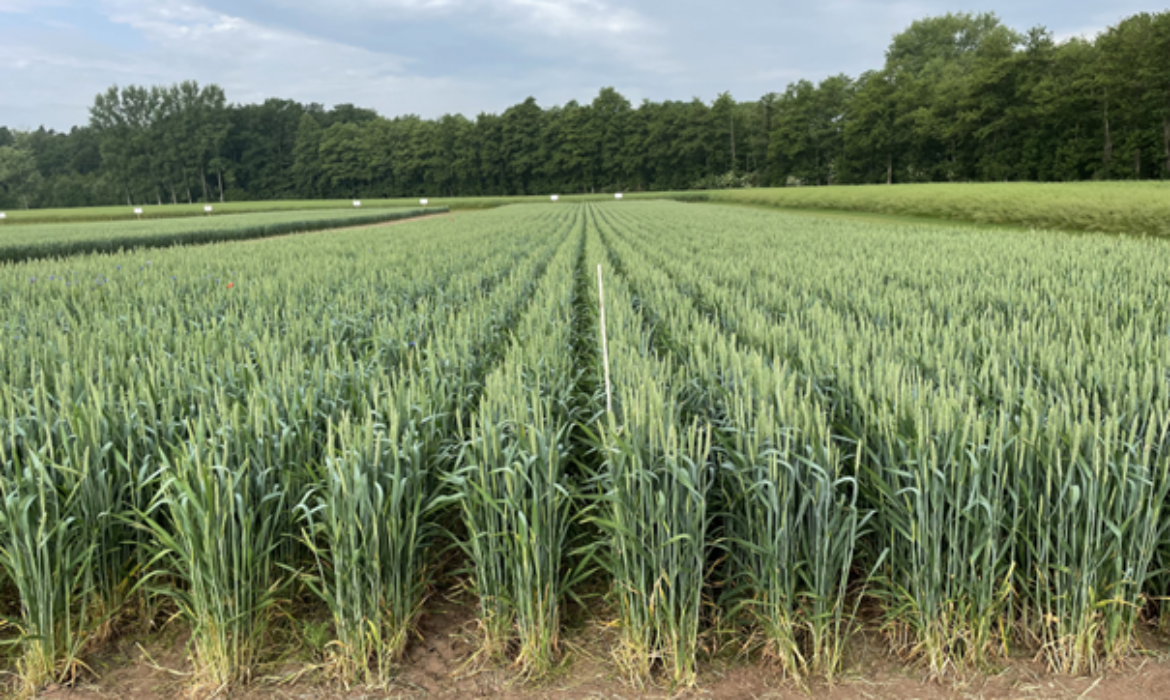
After we treated the companion plants relatively defensively in the first years, we wanted to give priority to biodiversity for the winter wheat 2022/2023. The sowing of wild herbs in the CRF system without the application of herbicide in the intermediate area was a benefit for wildlife but a challenge from the point of view of the conventional farmer.
The winter wheat variety Chevignon was sown with the Centaya rotary cultivator drill combination with RoTeC coulters on 12th October 2022.
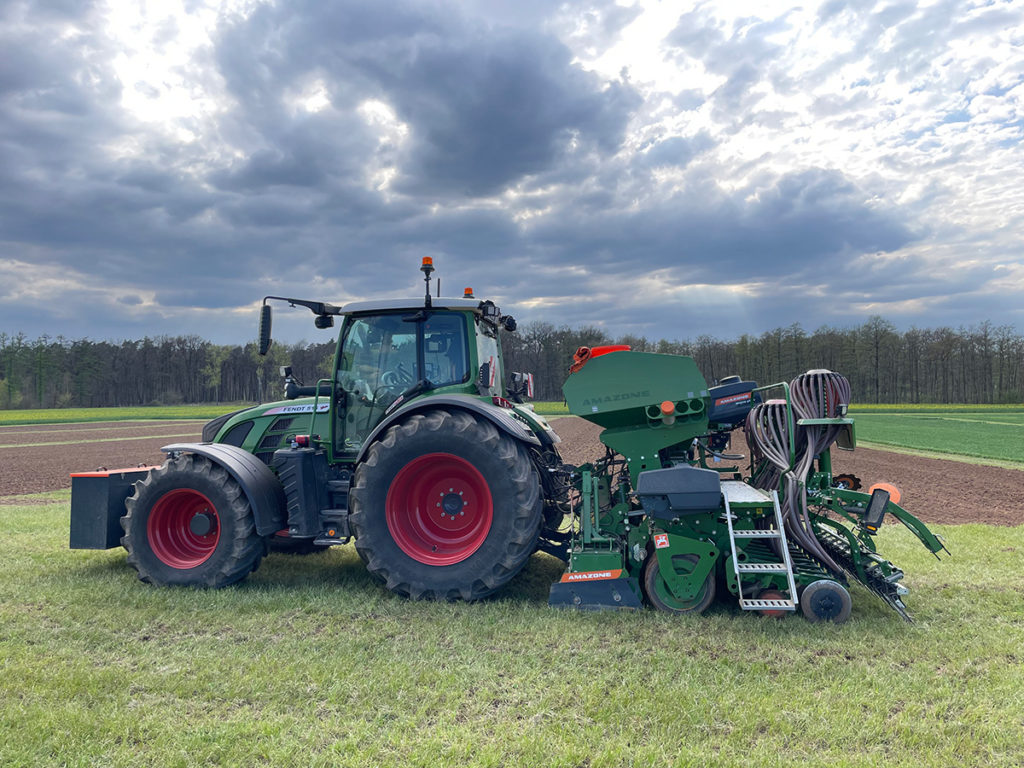
Fig.: Sowing of up to three seed types with the Centaya-C cultivator drill
The variants from recent years were selected:
- Conventional (A) with 12.5 cm row spacing and 330 seeds/m2 – with the usual full-width spraying
- Modern (B) with 25 cm row spacing and 165 seeds/m2 – with the usual full-width spraying
- CRF-reduced (C) with 2 x 12.5 cm at 50 cm distance to the next double row and 165 seeds/m2 – with companion crop and band spraying
- CRF-optimised (D) with 2 x 12.5 cm at 50 cm distance to the double row and165 seeds/m2 – with the usual full-width spraying
The two seed tanks and the two distributor heads enabled a conservation mix to be sown simultaneously in a double row between the two double rows of wheat in variant C (CRF-reduced) (seed rate: 10 kg/ha). This companion crop was a flowering wild plant mixture with 21 different components such as corn flower (Centaurea cyanus), ribwort plantain (Plantago lanceolata) or red clover (Trifolium pratense) from Rieger-Hofmann GmbH.
The companion crop established itself very slowly in the cool and wet autumn. On the other hand, some undesirable weeds appeared in the wheat crop. As a result, the first herbicide application was provided on 02nd December with 30 g/ha of Pointer SX and 3 l/ha of Boxer. A full-area application was carried out in variants A, B and D, whereas the plant protection measure was applied as a band spray in variant C. With a band width of 20 cm, we were able to achieve herbicide savings of 60 %.
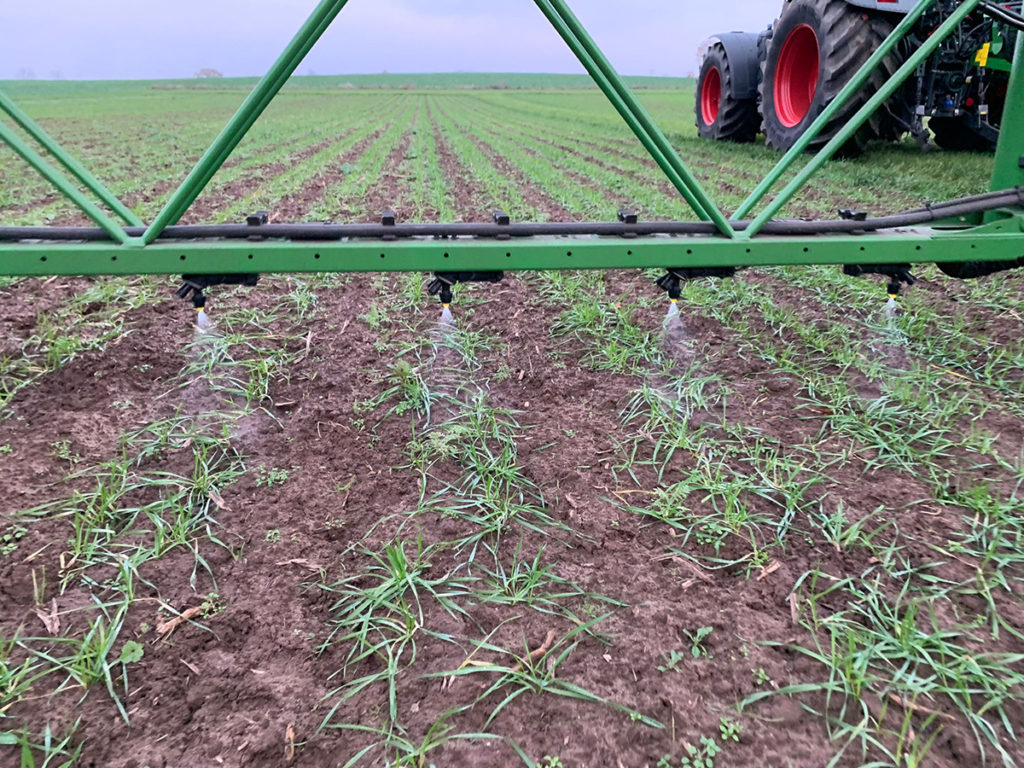
Fig.: Band spraying with a UX sprayer
Additional herbicide applications were carried out on 18th March with 0.2 l/ha of Husar Plus and on 25th April with 50 g/ha of Potacur SX, so that the wheat could develop in the spring without disturbance. In variant C, the wild plant mixture was developing very well and remained unaffected by the band application of the herbicides.
The height of the companion crops reached the level of the winter wheat in the middle of May. Corn flowers were extremely dominant, and the generally harmless chickweed also grew strongly in the wheat. A total of 14 plant species emerged in the biodiverse variant, 6 of which had been sown in the autumn. Annual meadow grass was the only plant species found in the conventional variant. A very positive overall conclusion for biodiversity was drawn in a bachelor’s thesis on vegetation ecology (Prof. Kathrin Kiehl, Osnabrück University of Applied Sciences).
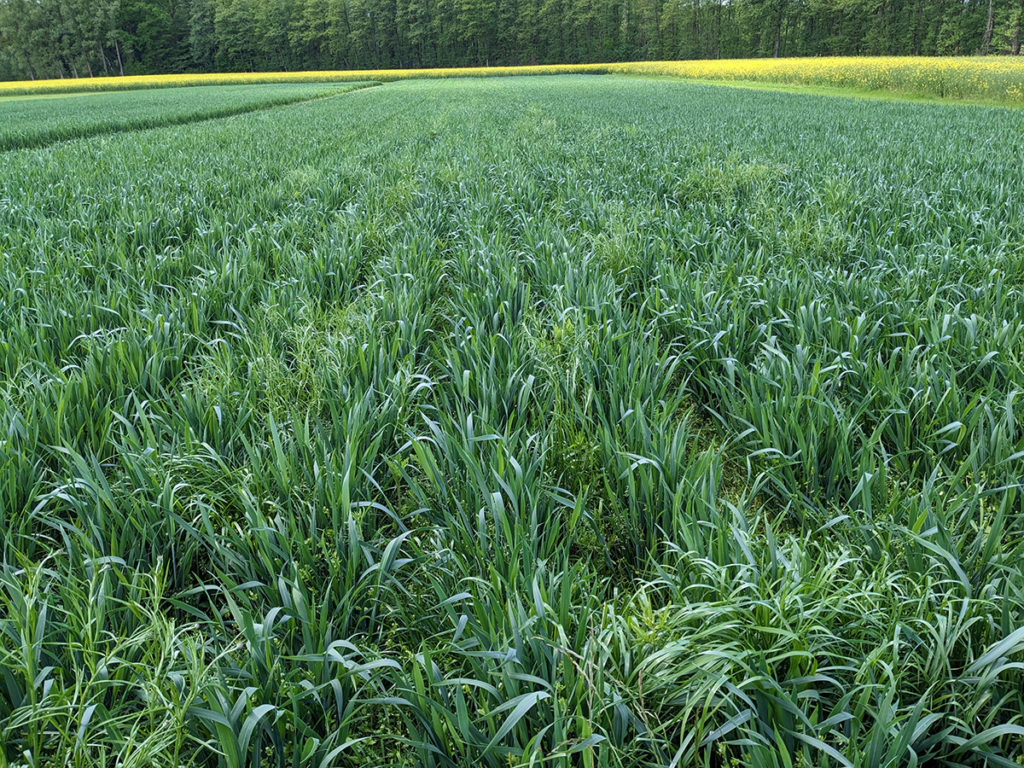
Fig.: Winter wheat in variant C just before use of the knife roller
A knife roller was inserted in the front attachment to protect the harvest in BBCH 37 on 16th May. The SCHMOTZER knife roller was developed for the Renuwi research project (funded by the Federal Environmental Foundation) and borrowed for this application. At a speed of 10 km/h, the double knife roller provided excellent shredding of the wild plants and only caused minor damage to the wheat.

Fig.: SCHMOTZER knife roller in use
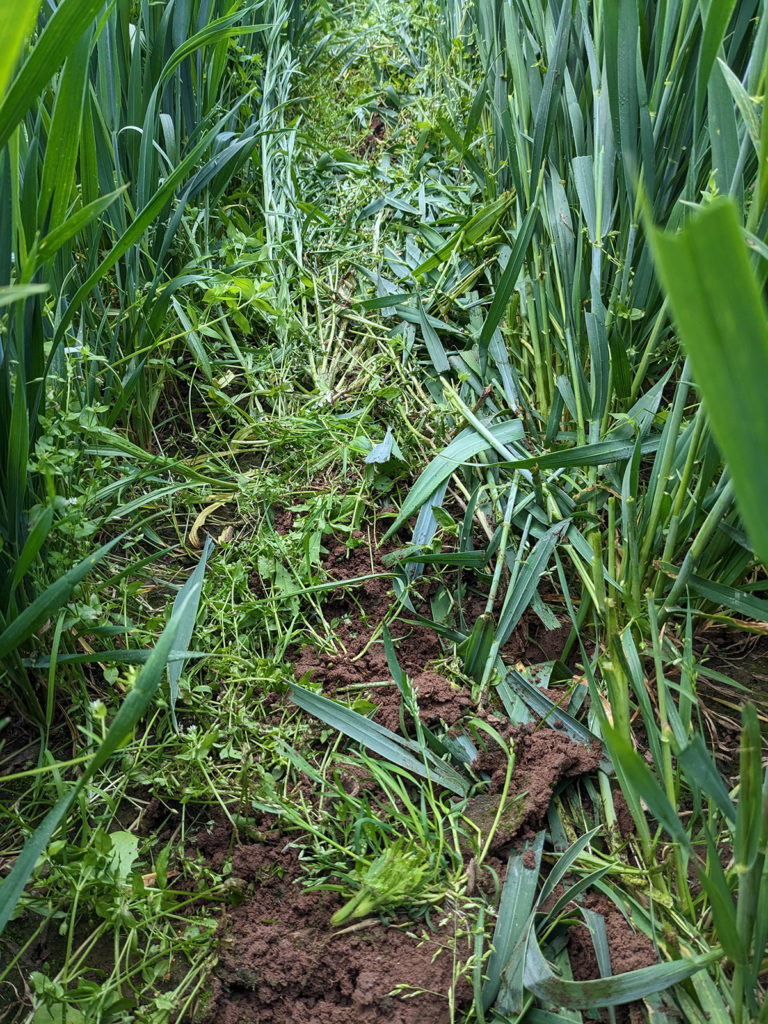
Fig.: Work profile of the knife roller
With good soil coverage, the dead plant material ensured that the soil moisture was retained in the following dry period.

Fig.: Excellent crop development on 8th June 2023
The wheat crop developed extremely well during flowering and the grain filling phase and the companion crops were barely perceptible. There was a long rainy period from the end of June to the beginning of August, with the result that the regulated herbs re-established themselves.
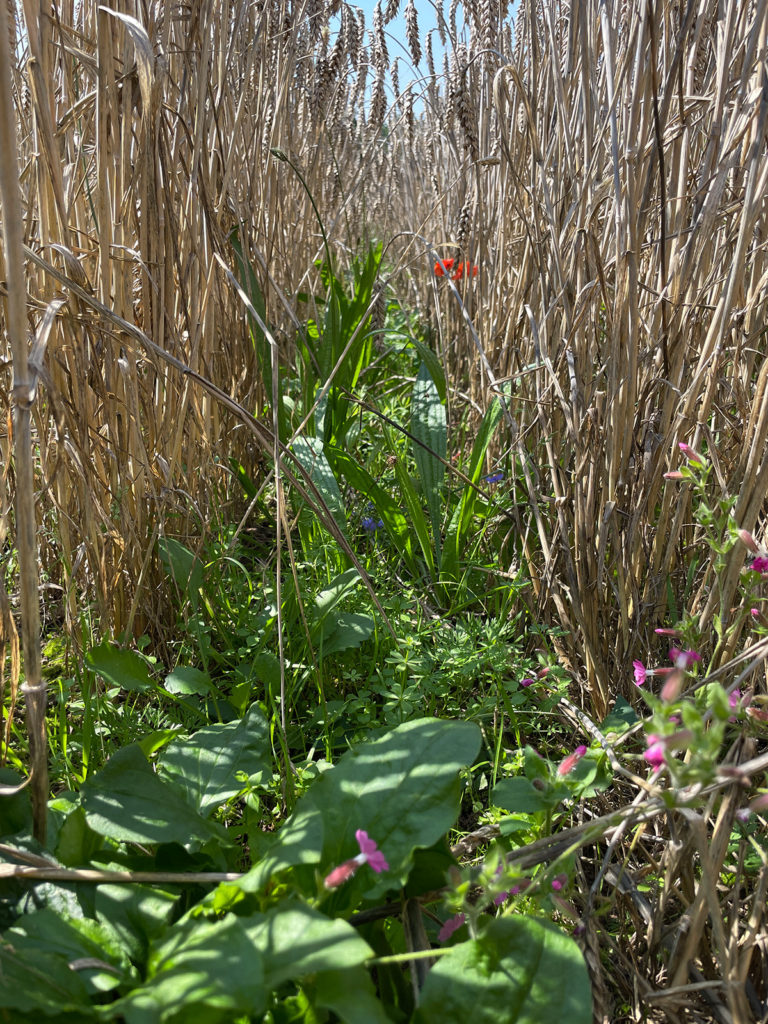
Fig.: Re-greening before the harvest
Despite the fact that some of the companion crops (corn poppy, red campion, corn flower) were flowering again, combine harvesting was possible on 20th August without any problems with a stubble height of approx. 10 cm.
Whereas an excellent yield of 94 dt/ha was obtained in variant A (conventional), the yield in variant C (CRF-reduced) was 25 % lower at 70 dt/ha. With 82 dt/ha, the grain yield of variant D (CRF-optimised) was at a similar level to the yield of variant B (modern) with 86 dt/ha.
Since the trial was set up purely as a block design without repetition, the results are not statistically corroborated. However, the significant loss of yield in variant C is a good indicator of what is likely to occur if provision is made for biodiversity.

